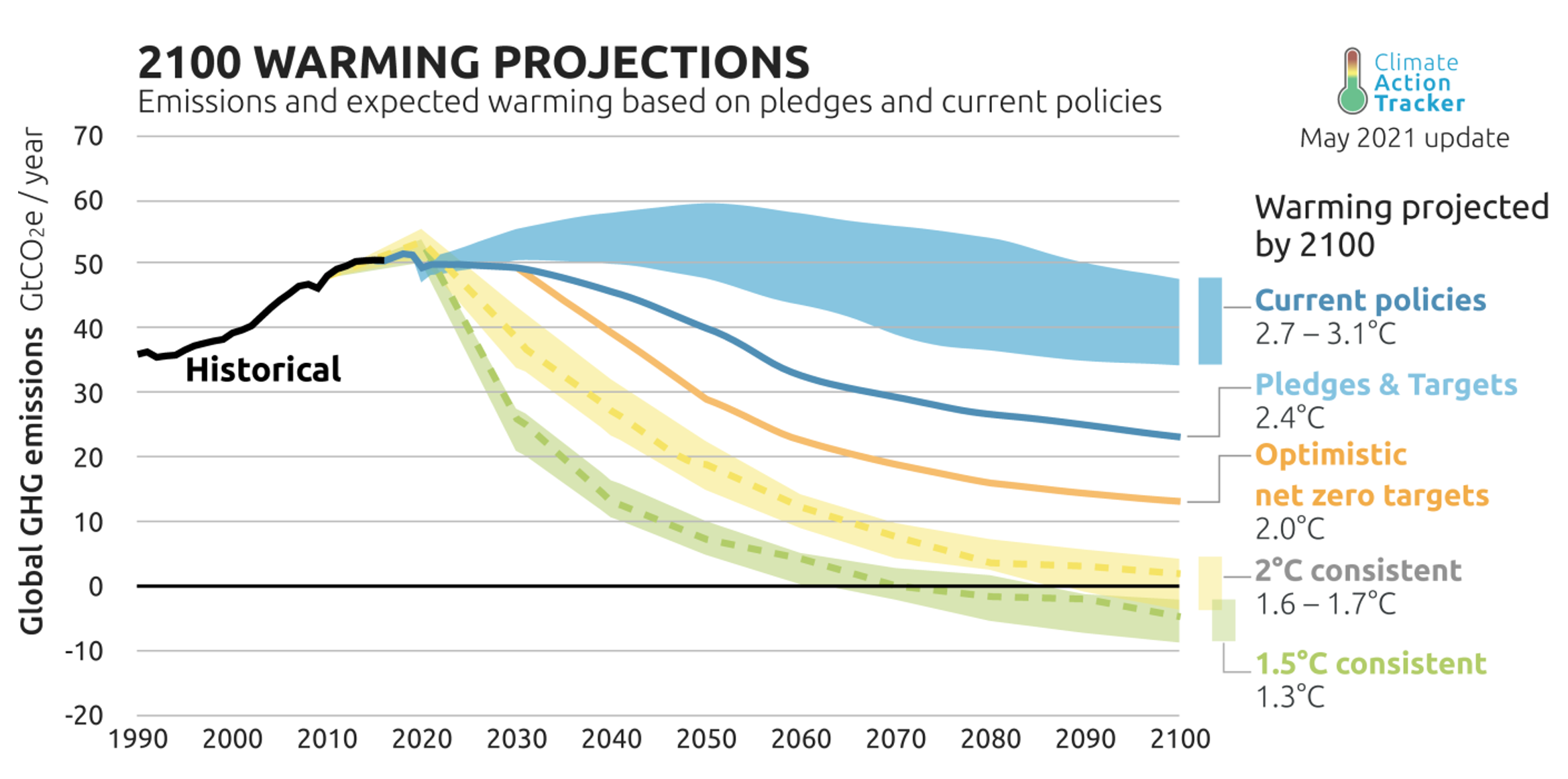Investors may believe the best way to help address the climate crisis is to allocate funds to companies and portfolios with low-carbon footprints. But that’s not enough — we also need active and forward-looking investment solutions.
It’s been six years since the Paris Agreement, an international treaty on climate change. Its goal is to limit global warming to well within 2 degrees Celsius compared with pre-industrial levels.1 At COP26 and beyond, focus now turns to the implementation of the 2015 agreement and the long-term ambitions to address the climate emergency.
In 2020, however, the Covid-19 pandemic dwarfed all other concerns. The tragic death toll was matched by severe economic downturns. With authorities imposing lockdowns, one silver lining was the impact on global greenhouse gas (GHG) emissions, which were estimated to have fallen by around 6% over the year compared with 2019 levels. While a step in the right direction, this also brings a rather stark realization: in order to limit climate change to within 1.5 degrees warming, the planet needs to halve GHG emissions by 2030.2 That equates to an annual decrease of 7.7% from now until then. In other words, every year we need to reduce global emissions by more than we achieved during 2020 when the world came to a virtual standstill. If we don’t hit this target, the consequences are likely to be catastrophic, far outstripping the loss of human life caused by the pandemic.
Upping our game
Unfortunately, we are unlikely to achieve this goal at present. So far, current net-zero pledges cover 73% of emissions. Even if implemented, the planet would still warm by 2.4 degrees.3 Our own proprietary climate scenario analysis supports these findings. If we are to have any hope of achieving net zero by 2050, we need investment in climate solutions and new innovations. We believe that finding such companies requires an active, fundamental and forward-looking investment approach.
Source: Climate Action Tracker, 2021.
Climate metrics can mislead
For investors, it may seem that the best way to help is to allocate capital to those companies and portfolios that have a low-carbon footprint.
For example, the financial sector is a relatively low-carbon-intensive sector from an operational perspective. (A carbon-intensity metric normalizes direct emissions relative to revenue, and is the industry standard for comparing carbon emissions.) By our calculations, the financial sector has a carbon intensity of 13 tons of CO2 per $1 million of revenue. The majority of this comes from the electricity firms use to light buildings and power data centers. This compares with the benchmark average of 162 tons of CO2 per $1 million of revenue.
So, creating a low-carbon portfolio is not all that hard to achieve in practice. Investment managers can simply avoid investing in energy-intensive sectors like utilities, materials and energy companies. Instead, they can allocate towards those with relatively small carbon footprints, such as financials, communication or consumer companies.
However, in the real world, this won’t help halve GHG emissions by 2030. By adopting such an approach, investors also risk missing out on areas where the greatest positive change is possible and where some of best investment opportunities exist.
Instead, we believe investors should consider allocating capital to, and engaging with, companies that are innovating to create real-world solutions to the climate crisis. In the long run, these solutions should make their business models more viable, potentially reducing the cost of capital. Such companies can also reduce some of the transitional and physical risks that climate change poses to their businesses. At the same time, they can potentially offer compelling revenue and profit growth opportunities, as demand for their products and services grows.
Furthermore, over time, data should improve, enabling better measurement of a company’s positive impact. To identify these opportunities, we need to look at the areas of the economy that are currently contributing the most GHG emissions. This can be split into four pillars:
- How we source and power
- How we transport
- How we build
- How we make and use.
Source: Climate Watch, the World Resources Institute (2020).
Another common metric for assessing a firm’s climate credentials is the percentage of its ‘green revenue’. This is the proportion of a company’s sales that are aligned to ‘green’ activities. However, relying solely on this data point, as many passive portfolios do, has pitfalls. First, it is backward-looking and doesn’t take into account a changing product mix. After all, many of the solutions needed to achieve net-zero emissions by 2050 are in development or have yet to be invented. They may therefore represent a very small proportion of a firm’s current total revenues despite being a key driver of future growth. Second, the metric measures the importance of the solution by looking at its revenue relative to the company’s total revenue. We believe it’s better to assess the materiality of the solution in the context of the issue at hand, such as reducing GHG emissions.
1 Paris Agreement to the United Nations Framework Convention on Climate Change, Dec. 12, 2015, T.I.A.S. No. 16-1104.
2 Science Based Targets, "The Net-Zero Standard," 2021.
3 Climate Action Tracker, 2021.
IMPORTANT INFORMATION
Projections are offered as opinion and are not reflective of potential performance. Projections are not guaranteed and actual events or results may differ materially.
US-151121-161033-1


